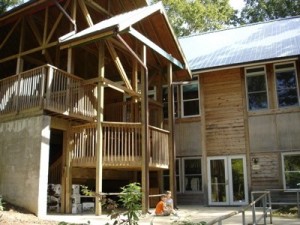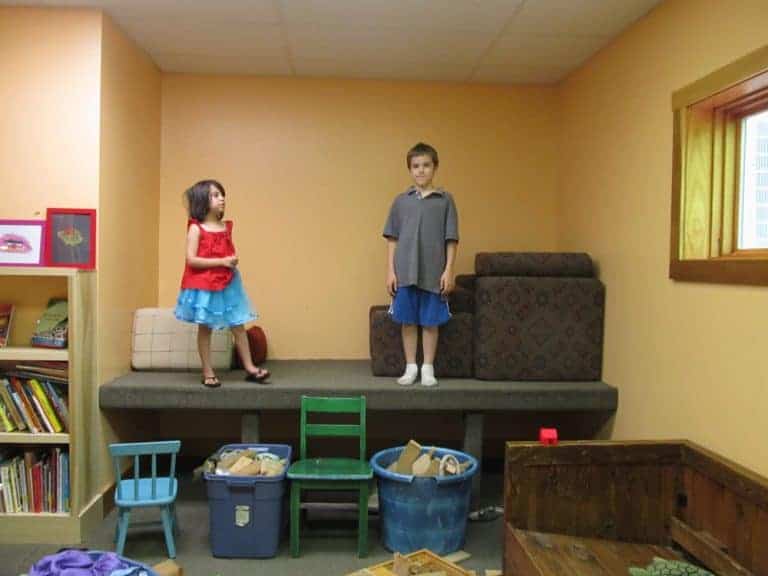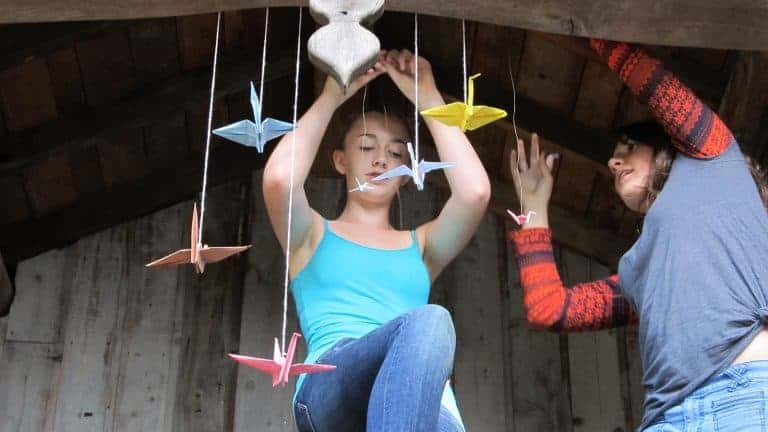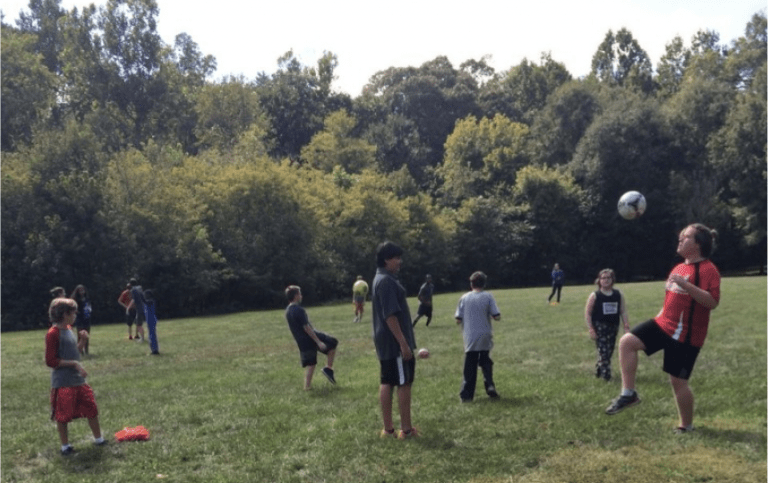"A Certain Kind of Matrix or Fabric or Foundation of Childhood"
 It is indeed May here on campus. Just last week students found a toad, a skink, and a worm snake- all in one day. After a week of cool spring rains, it was as if all the reptiles and and amphibians decided to warm their blood at once, and students did not miss the excitement. Spring birds, most especially the wood warblers, vireos, and phoebes, are calling from our woods. One phoebe has built its nest nest for all to see atop one of the support beams outside the Chesapeake Room. For three weeks, an amorous (or perhaps aggressive) cardinal keeps flying at its reflection in the window during School Meeting.
It is indeed May here on campus. Just last week students found a toad, a skink, and a worm snake- all in one day. After a week of cool spring rains, it was as if all the reptiles and and amphibians decided to warm their blood at once, and students did not miss the excitement. Spring birds, most especially the wood warblers, vireos, and phoebes, are calling from our woods. One phoebe has built its nest nest for all to see atop one of the support beams outside the Chesapeake Room. For three weeks, an amorous (or perhaps aggressive) cardinal keeps flying at its reflection in the window during School Meeting.
All of this wildlife activity informs this, the third post about the significance of the natural world here at Fairhaven School (and at all Sudbury schools.) Access to and interaction with nature is a constant at school, and affords our students a brilliant and increasingly rare foundation in the world itself. In the most recent issue of Orion Magazine, writer Rick Bass addresses this issue with no small eloquence:
In a way that I haven’t yet figured out how to fully articulate, I believe that children who get to see bald eagles, coyotes, deer, moose, grouse, and other similar sights each morning will have a certain kind of matrix or fabric or foundation of childhood, the nature and quality of which will be increasingly rare and valuable as time goes on, and which will be cherished into adulthood, as well as becoming – and this is a leap of faith by me – a source of strength and knowledge to them somehow. That the daily witnessing of the natural wonders is a kind of education of logic and assurance that cannot be duplicated by any other means, or in other places: unique, and significant, and, by God, still somehow relevant, even now, in the twenty-first century.
For as long as possible, I want my girls to keep believing that beauty, though not quite commonplace, and never to pass unobserved or unappreciated, is nonetheless easily witnessed on any day, in any given moment, around any forthcoming bend. And that the wild world still has a lovely order and pattern and logic, even in the shouting, disorderly chaos of breaking-apart May and reassembling May. That if there can be a logic and order even in May, then there can be in all seasons and all things.
–Rick Bass (reproduced with permission from http://www.orionmagazine.org/ )
Towards the end of the day, two older students came into the office. From my computer monitor, I looked up to see a baby snapping turtle on one student’s palm. As I leaned towards the reptile, it tracked my movements, swiveling left, then right. We discussed what to do with this precise, tiny version of a snapper. “Where’s its mother?” the other student asked. I told them the hard facts of reptilian birth and abandonment. Cold-blooded. They kept their find a few more minutes, showing anybody they saw the turtle, then released it back to the stream, hoping it would avoid predators and survive.
Every day, our warm-blooded, sentient students embody what Bass writes about in his piece. They know nature- they see it, hold it, hear it. In the end, I agree that these experiences provide a connection, a bedrock foundation- an education- as our students go forth into the world.
Mark McCaig
May, 2009


